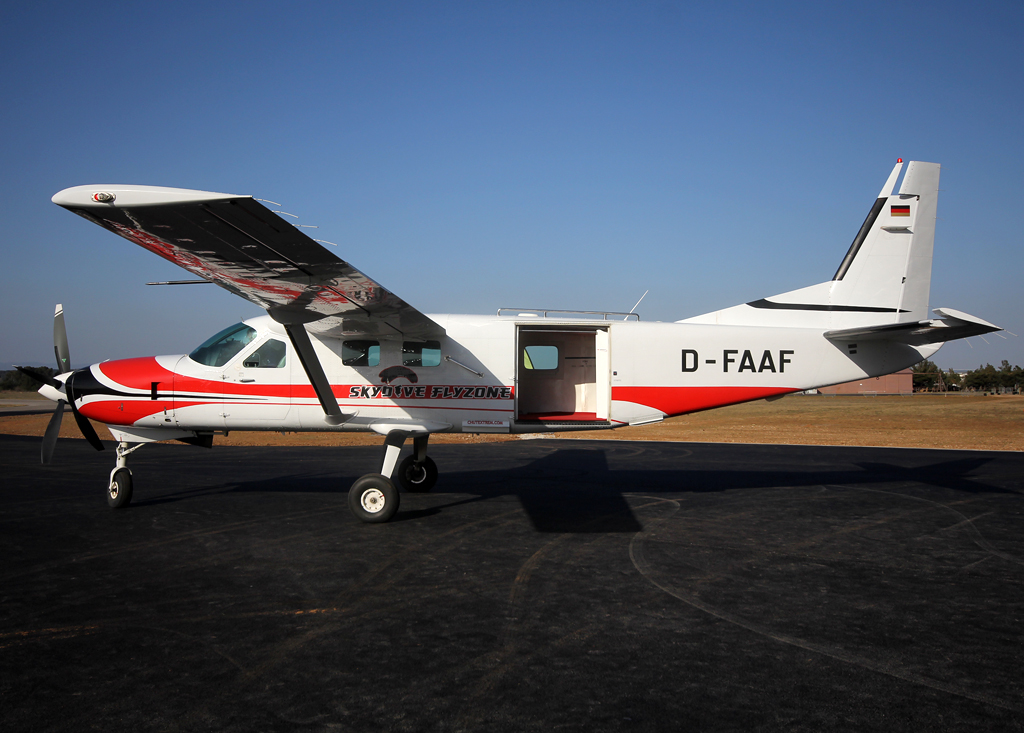Region
Crash of a Beechcraft C90 King Air in Sainte-Radegonde
Date & Time:
Mar 29, 2013 at 1250 LT
Registration:
N90KH
Survivors:
Yes
Schedule:
Bordeaux – Bergerac
MSN:
LJ-542
YOM:
1971
Crew on board:
1
Crew fatalities:
Pax on board:
1
Pax fatalities:
Other fatalities:
Total fatalities:
0
Captain / Total hours on type:
300.00
Circumstances:
The pilot and two passengers departed Sarlat-Domme Airport for a training mission over the region of Bordeaux. A precision approach was completed at Bordeaux-Mérignac Airport followed by a go-around procedure. The IFR flight plan was closed and the pilot continued under VFR mode to Bordeaux-Léognan-Saucats Aerodrome where he landed. A passenger deplaned, the engine remained running and the aircraft took off few minutes later to Bergerac where a refueling was planned. Approximately 10 minutes after takeoff, while cruising at an altitude of 2,000 feet, both engines failed. The pilot reduced his altitude, selected gear down and attempted and emergency landing in a vineyard. Upon landing, the undercarriage were torn off and the aircraft slid for few dozen metres before coming to rest. Both occupants escaped uninjured and the aircraft was damaged beyond repair.
Probable cause:
Failure of both engines in flight due to fuel exhaustion. It was determined that the pilot took off with 800 lbs of fuel on board, thinking having enough fuel for an hour and a half flight which corresponds to an autonomy with 800 liters. In such conditions, the fuel quantity was not sufficient to complete the flight and there were no required reserves. It is believed that the double engine failure was caused by the fact that the pilot mistook pounds for liters (livres - litres in French). The lack of a preflight visual check of the fuel gauges could did not allow the pilot to notice his mistake.
Final Report:
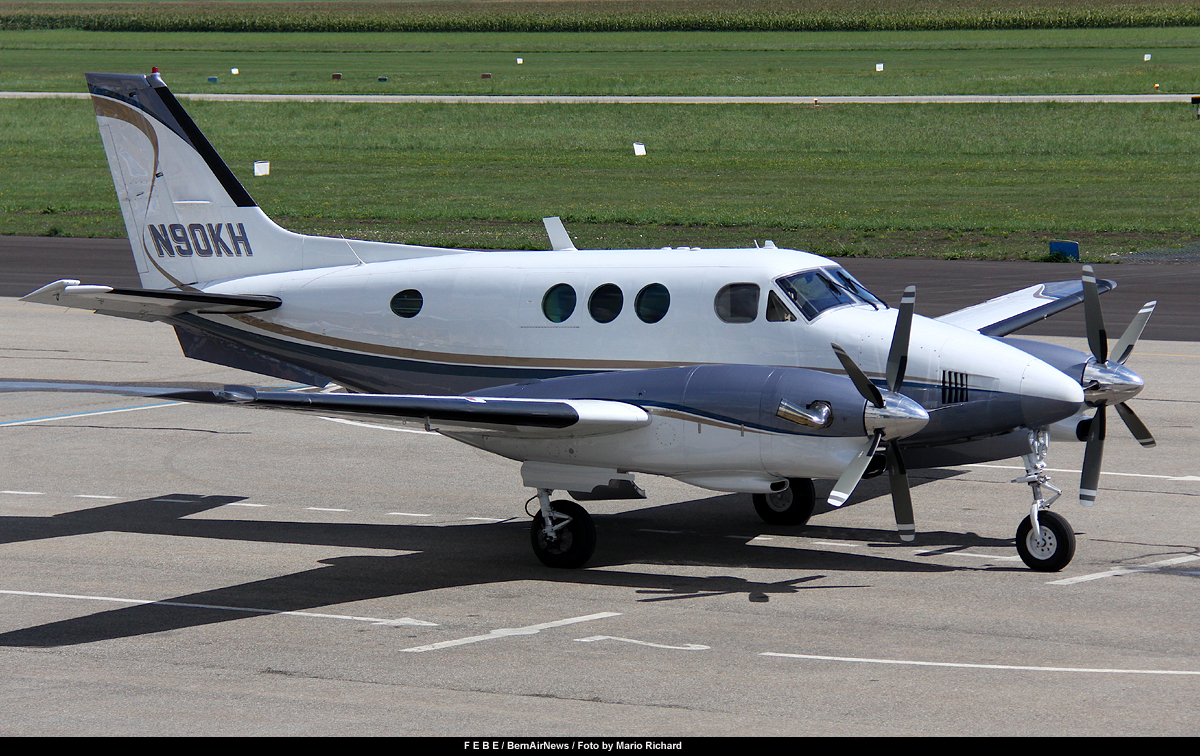
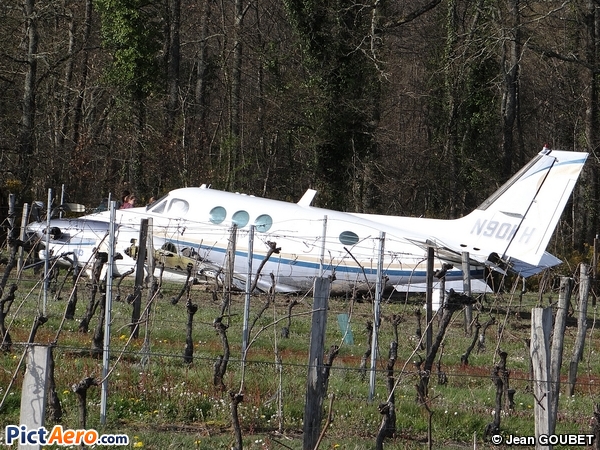
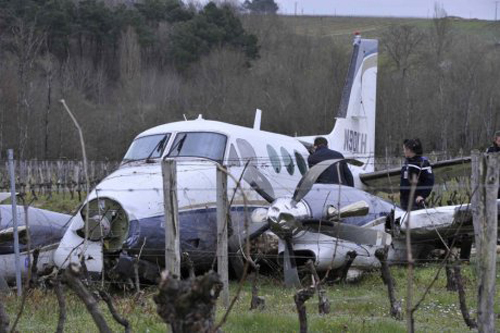

Crash of a Raytheon 390 Premier I in Annemasse: 2 killed
Date & Time:
Mar 4, 2013 at 0839 LT
Registration:
VP-CAZ
Survivors:
Yes
Schedule:
Annemasse - Geneva
MSN:
RB-202
YOM:
2007
Crew on board:
1
Crew fatalities:
Pax on board:
2
Pax fatalities:
Other fatalities:
Total fatalities:
2
Captain / Total hours on type:
1386.00
Aircraft flight hours:
1388
Aircraft flight cycles:
1404
Circumstances:
On Monday 4 March 2013, the pilot and two passengers arrived at Annemasse aerodrome (France) at about 7 h 00. They planned to make a private flight of about five minutes to Geneva airport on board the Beechcraft Premier 1A, registered VP-CAZ. The temperature was -2°C and the humidity was 98% with low clouds. The aeroplane had been parked on the parking area of the aerodrome since the previous evening. At 7 h 28, the Geneva ATC service gave the departure clearance for an initial climb towards 6,000 ft with QNH 1018 hPa towards the Chambéry VOR (CBY). At about 7 h 30, when the CVR recording of the accident flight started, the engines had already been started up. At about 7 h 34, the pilot called out the following speeds that would be used during the takeoff roll:
- V1 : 101 kt
- VR : 107 kt
- V2 : 120 kt.
At about 7 h 35, the pilot performed the pre-taxiing check-list. During these checks, he called out “anti-ice ON”, correct operation of the flight controls, and the position of the flaps on 10°.
Taxiing towards runway 12 began at 7 h 36. At 7 h 37 min 43, the pilot called out the end of the takeoff briefing, then activation of the engine anti-icing system. At 7 h 38 min 03, the pilot called out the start of the takeoff roll. Fifteen seconds later, the engines reached takeoff thrust. The aeroplane lifted off at 7 h 38 min 37. Several witnesses stated that it adopted a high pitch-up attitude, with a low rate of climb. At 7 h 38 min 40, the first GPWS “Bank angle - Bank angle” warning was recorded on the CVR. It indicated excessive bank. A second and a half later, the pilot showed his surprise by an interjection. It was followed by the aural stall warning that lasted more than a second and a further GPWS “Bank angle - Bank angle” warning. At about 7 h 38 min 44, the aeroplane was detected by the Dole and Geneva radars at a height of about 80 ft above the ground. Other “Bank Angle” warnings and stall warnings were recorded on the CVR on several occasions. Several witnesses saw the aeroplane bank sharply to the right, then to the left. At 7 h 38 min 49 the aeroplane was detected by the radars at a height of about 150 ft above the ground. At 07 h 38 min 52, the main landing gear struck the roof of a first house. The aeroplane then collided with the ground. During the impact sequence, the three landing gears and the left wing separated from the rest of the aeroplane. The aeroplane slid along the ground for a distance of about 100 m before colliding with a garden shed, a wall and some trees in the garden of a second house. The aeroplane caught fire and came to a stop. The pilot and the passenger seated to his right were killed. The female passenger seated at the rear was seriously injured. According to the NTSB and BEA, the airplane was owned by Chakibel Associates Limited n Tortola and operated by Global Jet Luxembourg.
- V1 : 101 kt
- VR : 107 kt
- V2 : 120 kt.
At about 7 h 35, the pilot performed the pre-taxiing check-list. During these checks, he called out “anti-ice ON”, correct operation of the flight controls, and the position of the flaps on 10°.
Taxiing towards runway 12 began at 7 h 36. At 7 h 37 min 43, the pilot called out the end of the takeoff briefing, then activation of the engine anti-icing system. At 7 h 38 min 03, the pilot called out the start of the takeoff roll. Fifteen seconds later, the engines reached takeoff thrust. The aeroplane lifted off at 7 h 38 min 37. Several witnesses stated that it adopted a high pitch-up attitude, with a low rate of climb. At 7 h 38 min 40, the first GPWS “Bank angle - Bank angle” warning was recorded on the CVR. It indicated excessive bank. A second and a half later, the pilot showed his surprise by an interjection. It was followed by the aural stall warning that lasted more than a second and a further GPWS “Bank angle - Bank angle” warning. At about 7 h 38 min 44, the aeroplane was detected by the Dole and Geneva radars at a height of about 80 ft above the ground. Other “Bank Angle” warnings and stall warnings were recorded on the CVR on several occasions. Several witnesses saw the aeroplane bank sharply to the right, then to the left. At 7 h 38 min 49 the aeroplane was detected by the radars at a height of about 150 ft above the ground. At 07 h 38 min 52, the main landing gear struck the roof of a first house. The aeroplane then collided with the ground. During the impact sequence, the three landing gears and the left wing separated from the rest of the aeroplane. The aeroplane slid along the ground for a distance of about 100 m before colliding with a garden shed, a wall and some trees in the garden of a second house. The aeroplane caught fire and came to a stop. The pilot and the passenger seated to his right were killed. The female passenger seated at the rear was seriously injured. According to the NTSB and BEA, the airplane was owned by Chakibel Associates Limited n Tortola and operated by Global Jet Luxembourg.
Probable cause:
The pilot’s insufficient appreciation of the risks associated with ground-ice led him to take off with contamination of the critical airframe surfaces. This contaminant deposit then caused the aerodynamic stall of the aeroplane and the loss of control shortly after lift-off.
Final Report:

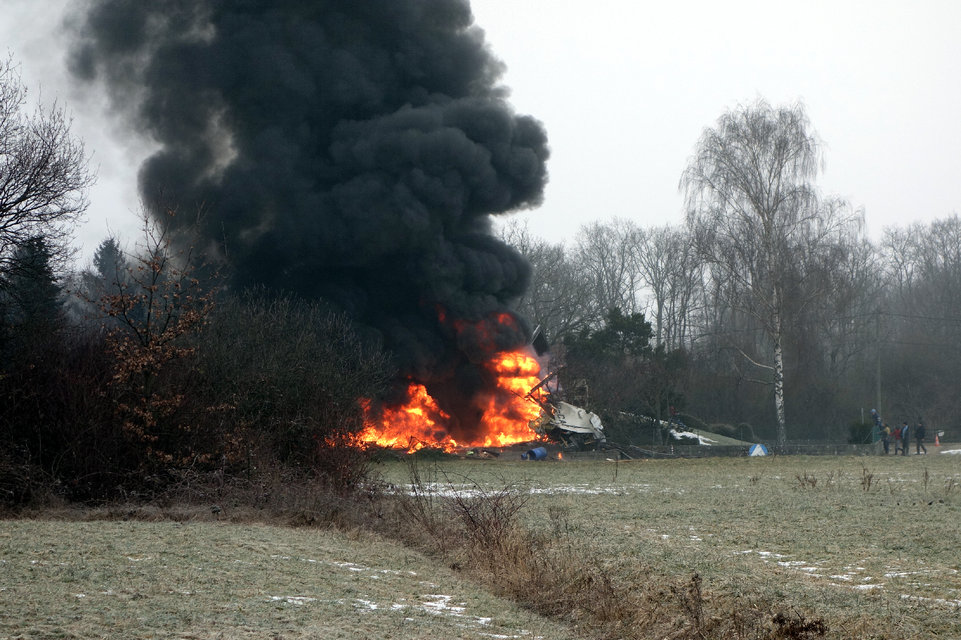
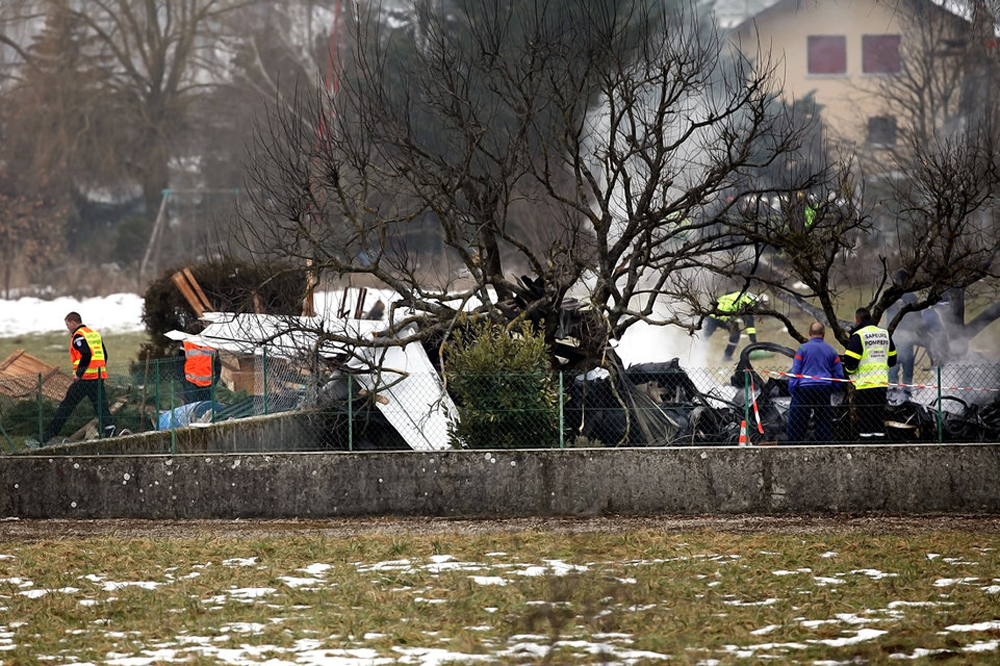
Crash of a Casa C-295M in Saint-Germain-du-Teil: 6 killed
Date & Time:
Nov 9, 2012 at 1545 LT
Registration:
7T-WGF
Survivors:
No
Schedule:
Paris - Boufarik AFB
MSN:
S-026
YOM:
2005
Crew on board:
5
Crew fatalities:
Pax on board:
1
Pax fatalities:
Other fatalities:
Total fatalities:
6
Circumstances:
The twin engine aircraft departed Paris-Le Bourget Airport around 1500LT bound to Boufarik Air Base near Algiers, carrying a crew of five, one employee of the National Bank of Algeria and a cargo consisting of fiduciary papers intended to the manufacture of bank notes. While cruising at FL150, the crew encountered icing conditions and elected to gain height. While climbing, the aircraft entered an uncontrolled descent, partially disintegrated in the air and eventually crashed in a field located in Saint-Germain-du-Teil, some 20 km east of Mende. The aircraft was totally destroyed and all six occupants were killed.
Probable cause:
In a report published in January 2013, the French BEA confirmed that the accident was the consequence of an excessive frost accretion on all surfaces and airframe of the airplane. Investigations were able to determine that the aircraft was flying at the limit of its performances in adverse weather conditions with dangerous phenomena such as the accretion of clear ice. This situation caused the frost alarm to activate, and the pilots to increase their altitude. At this moment, the airplane entered a spin and the tail detached due to aerodynamic forces that exceeded its certification/design. Out of control, the aircraft completed several barrels before breaking up and descending to the ground.
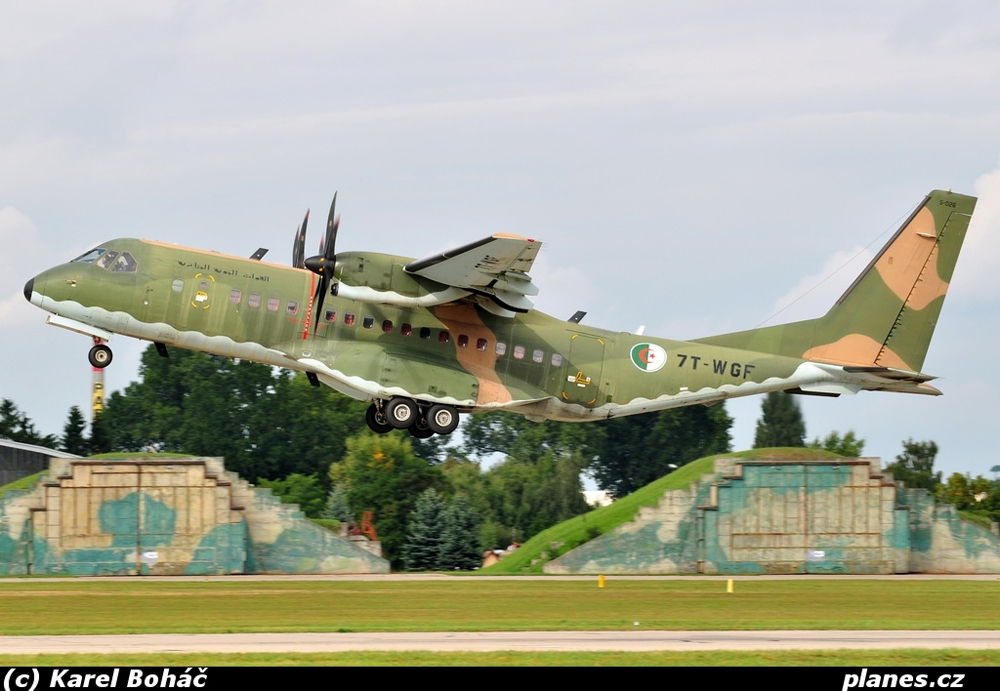
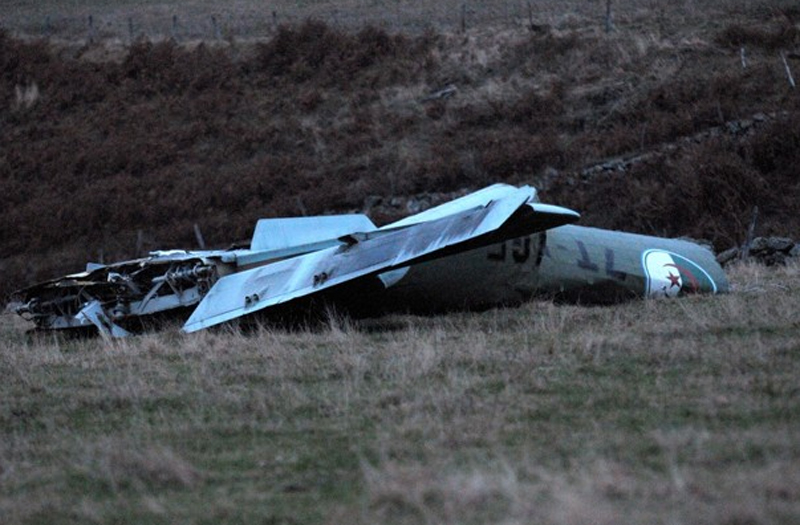


Crash of a Pilatus PC-12/47 in Solemont: 4 killed
Date & Time:
Aug 24, 2012 at 1800 LT
Registration:
HB-FPZ
Survivors:
No
Schedule:
Antwerp - Saanen (Gstaad)
MSN:
702
YOM:
2006
Crew on board:
1
Crew fatalities:
Pax on board:
3
Pax fatalities:
Other fatalities:
Total fatalities:
4
Captain / Total hours on type:
1785.00
Circumstances:
The pilot took off from Anvers (Belgium) at around 14 h 40 bound for Saanen (Switzerland) where he was supposed to drop off his three passengers. The flight was performed in IFR then VFR, at a cruise altitude of 26,000 ft. After about 1 h 15 min of flight, still under IFR, the Geneva controller cleared the pilot to descend towards FL 210 and to fly towards Saanen with a view to an approach. A short time later, the radar data showed that the aeroplane deviated from the planned trajectory. Following a question from the controller, the pilot said he had an autopilot problem. The controller then asked the pilot to follow heading 165°, which the pilot read back, then asked him ‘‘are you okay, okay for the safety, it’s good for you? ‘‘. The pilot answered that he had a ‘‘big problem’’. The radar data show tight turns on descent. During these manœuvres, in reply to a request from the controller, the pilot said that he was in ‘‘total IMC’’. During this communication, the aeroplane‘s overspeed warning could be heard. The aeroplane was then descending at 15,500 ft/min. About ten seconds later, it was climbing at 15,500 ft/min. The right wing broke off about twenty seconds later. The indicated airspeed was then 274 kt and the altitude was 12,750 ft. The wreckage was found in woods in the commune of Solemont (25). A piece of the right wing was found about 2.5 km from the main wreckage. Some debris, all from the right wing, was found on a south-west/north-east axis. The aeroplane part that was furthest away was found 10 km from the main site. The aircraft disintegrated on impact and all four occupants were killed.
Probable cause:
The in-flight failure of the right wing was due to exceeding the aeroplane’s structural limits (ultimate loads) during loss of control by the pilot. In the absence of any flight recorders, the investigation was not able to determine the causes of this loss of control. It is possible that it may have been induced by a loss of situational awareness by the pilot at the controls of an aeroplane affected by an icing phenomenon. This phenomenon may have affected the aeroplane’s wings or an area around the roll control.
Final Report:


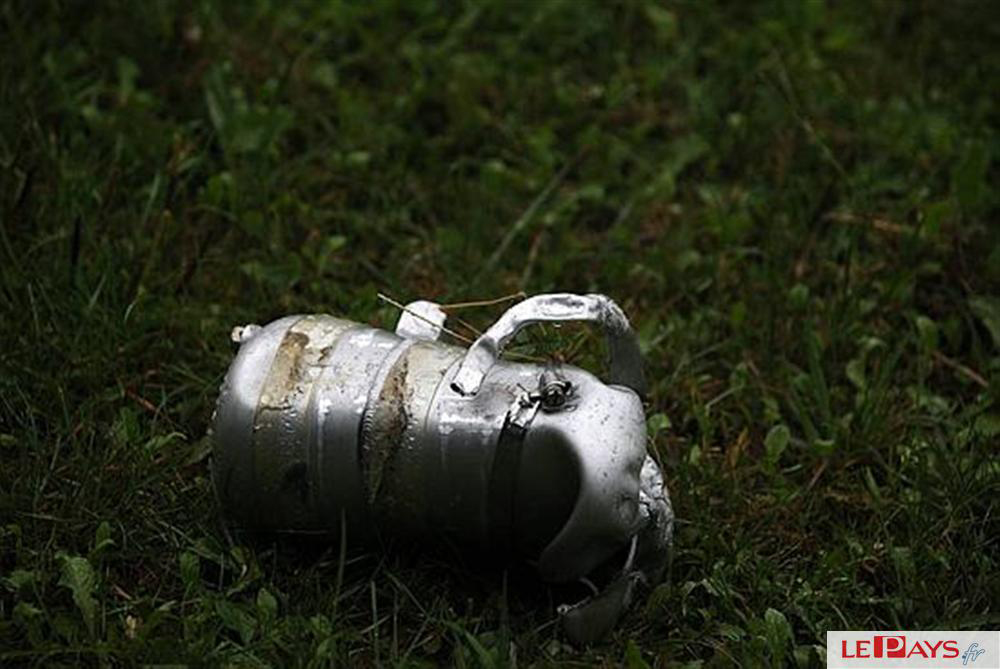
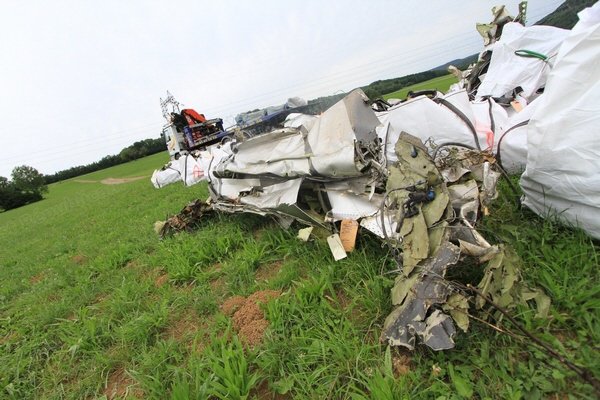
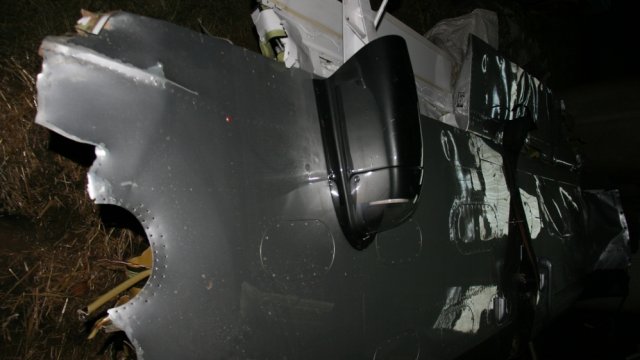
Crash of a Pilatus PC-6/B2-H2 Turbo Porter off Granville
Date & Time:
Aug 18, 2012 at 1855 LT
Registration:
F-GMJG
Survivors:
Yes
Schedule:
Granville - Granville
MSN:
659
YOM:
1967
Crew on board:
1
Crew fatalities:
Pax on board:
0
Pax fatalities:
Other fatalities:
Total fatalities:
0
Aircraft flight hours:
13300
Circumstances:
The single engine aircraft departed Granville-Bréville Aerodrome on a local skydiving mission. After all skydivers left the aircraft, the pilot reduced his altitude to return to his base. On final approach to runway 07, the aircraft went out of control and crashed in the sea, few dozen metres offshore. A sailor went quickly to the scene and evacuated the pilot who was slightly injured while the aircraft sank by a depth of 5-6 metres. The wreckage was recovered and pulled on the beach a day later. The aircraft was damaged beyond repair.
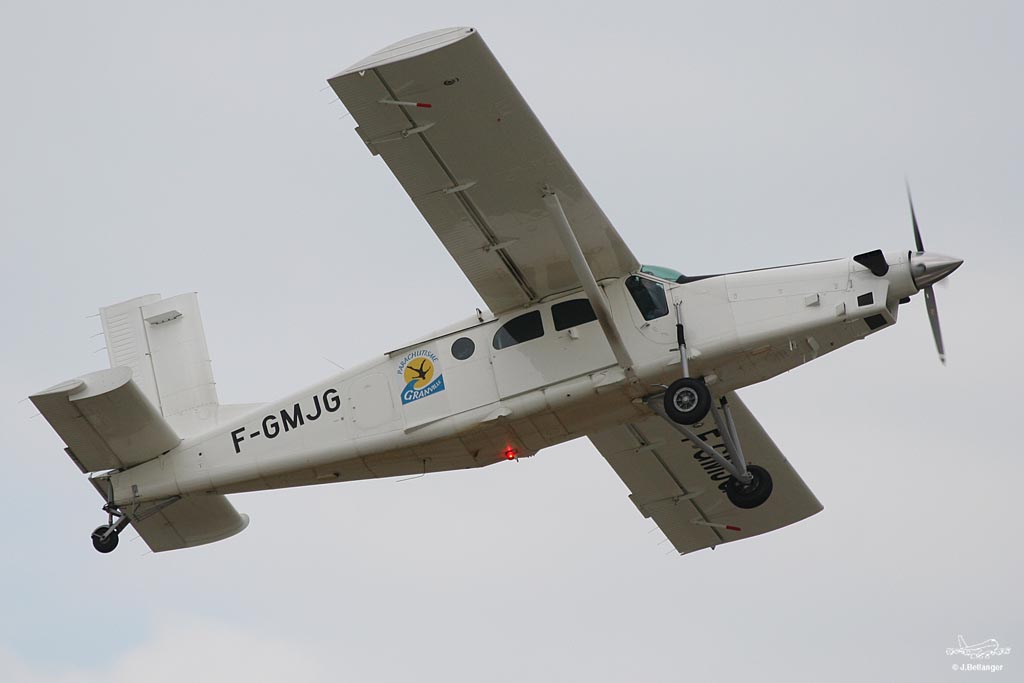
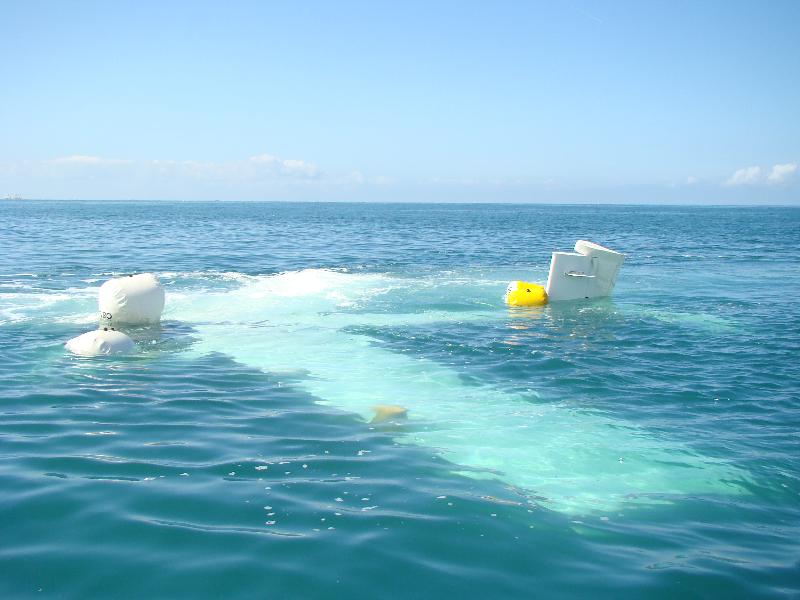

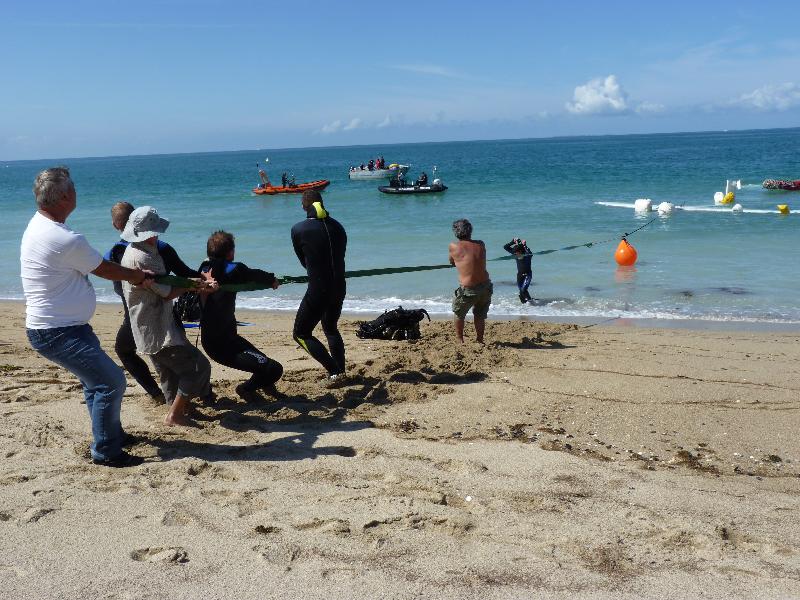
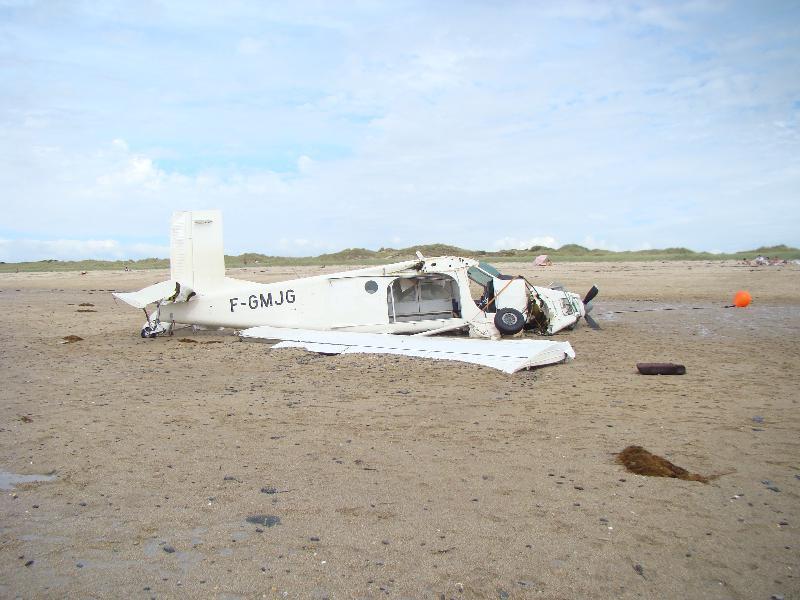

Crash of a Gulfstream GIV in Le Castellet: 3 killed
Date & Time:
Jul 13, 2012 at 1518 LT
Registration:
N823GA
Survivors:
No
Schedule:
Nice - Le Castellet
MSN:
1005
YOM:
1987
Flight number:
UJT823
Crew on board:
3
Crew fatalities:
Pax on board:
0
Pax fatalities:
Other fatalities:
Total fatalities:
3
Captain / Total hours on type:
690.00
Copilot / Total hours on type:
556
Aircraft flight hours:
12210
Aircraft flight cycles:
5393
Circumstances:
The crew, consisting of a Captain and a co-pilot, took off at around 6 h 00 for a flight between Athens and Istanbul Sabiha Gokcen (Turkey). A cabin aid was also on board the aeroplane. The crew then made the journey between Istanbul and Nice (06) with three passengers. After dropping them off in Nice, the aeroplane took off at 12 h 56 for a flight to Le Castellet aerodrome in order to park the airplane for several days, the parking area at Nice being full. The Captain, in the left seat, was Pilot Monitoring (PM). The copilot, in the right seat, was Pilot Flying (PF). Flights were operated according to US regulation 14 CFR Part 135 (special rules applicable for the operation of flights on demand). The flight leg was short and the cruise, carried out at FL160, lasted about 5 minutes. At the destination, the crew was cleared to perform a visual approach to runway 13. The autopilot and the auto-throttle were disengaged, the gear was down and the flaps in the landing position. The GND SPOILER UNARM message, indicating nonarming of the ground spoilers, was displayed on the EICAS and the associated single chime aural warning was triggered. This message remained displayed on the EICAS until the end of the flight since the crew forgot to arm the ground spoilers during the approach. At a height of 25 ft, while the aircraft was flying over the runway threshold slightly below the theoretical descent path, a SINK RATE warning was triggered. The PF corrected the flight path and the touchdown of the main landing gear took place 15 metres after the touchdown zone - that’s to say 365 metres from the threshold - and slightly left of the centre line of runway 13(3). The ground spoilers, not armed, did not automatically deploy. The crew braked and actuated the deployment of the thrust reversers, which did not deploy completely(4). The hydraulic pressure available at brake level slightly increased. The deceleration of the aeroplane was slow. Four seconds after touchdown, a MASTER WARNING was triggered. A second MASTER WARNING(5) was generated five seconds later. The nose landing gear touched down for the first time 785 metres beyond the threshold before the aeroplane’s pitch attitude increased again, causing a loss of contact of the nose gear with the ground. The aircraft crossed the runway centre line to the right, the crew correcting this by a slight input on the rudder pedals to the left. They applied a strong nose-down input and the nose gear touched down on the runway a second time, 1,050 metres beyond the threshold. The speed brakes were then manually actuated by the crew with an input on the speed brake control, which then deployed the panels. Maximum thrust from the thrust reversers was reached one second later(6). The aircraft at this time was 655 metres from the runway end and its path began to curve to the left. In response to this deviation, the crew made a sharp input on the right rudder pedal, to the stop, and an input on the right brake, but failed to correct the trajectory. The aeroplane, skidding to the right(7), ran off the runway to the left 385 metres from the runway end at a ground speed of approximately 95 knots. It struck a runway edge light, the PAPI of runway 31, a metal fence then trees and caught fire instantly. An aerodrome firefighter responded quickly onsite but did not succeed in bringing the fire under control. The occupants were unable to evacuate the aircraft.
Probable cause:
Forgetting to arm the ground spoilers delayed the deployment of the thrust reversers despite their selection. Several MASTER WARNING alarms were triggered and the deceleration was low. The crew then responded by applying a strong nose-down input in order to make sure that the aeroplane stayed in contact with the ground, resulting in unusually high load for a brief moment on the nose gear. After that, the nose gear wheels deviated to the left as a result of a left input on the tiller or a failure in the steering system. It was not possible to establish a formal link between the high load on the nose gear and this possible failure. The crew was then unable to avoid the runway excursion at high speed and the collision with trees. The aerodrome fire-fighter, alone at the time of the intervention, was unable to bring the fire under control after the impact. Although located outside of the runway safety
area on either side of the runway centre line, as provided for by the regulations, the presence of rocks and trees near the runway contributed to the consequences of the accident.
The accident was caused by the combination of the following factors:
- The ground spoilers were not armed during the approach,
- A lack of a complete check of the items with the ‘‘before landing’’ checklist, and more generally the UJT crews’ failure to systematically perform the checklists as a challenge and response to ensure the safety of the flight,
- Procedures and ergonomics of the aeroplane that were not conducive to monitoring the extension of the ground spoilers during the landing,
- A possible left input on the tiller or a failure of the nose gear steering system having caused its orientation to the left to values greater than those that can be commanded using the rudder pedals, without generating any warning,
- A lack of crew training in the ‘‘Uncommanded Nose Wheel Steering’’ procedure, provided to face uncommanded orientations of the nose gear,
- An introduction of this new procedure that was not subject to a clear assessment by Gulfstream or the FAA,
- Failures in updating the documentation of the manufacturer and the operator,
- Monitoring by the FAA that failed to detect both the absence of any updates of this documentation and the operating procedure for carrying out checklists by the operator.
area on either side of the runway centre line, as provided for by the regulations, the presence of rocks and trees near the runway contributed to the consequences of the accident.
The accident was caused by the combination of the following factors:
- The ground spoilers were not armed during the approach,
- A lack of a complete check of the items with the ‘‘before landing’’ checklist, and more generally the UJT crews’ failure to systematically perform the checklists as a challenge and response to ensure the safety of the flight,
- Procedures and ergonomics of the aeroplane that were not conducive to monitoring the extension of the ground spoilers during the landing,
- A possible left input on the tiller or a failure of the nose gear steering system having caused its orientation to the left to values greater than those that can be commanded using the rudder pedals, without generating any warning,
- A lack of crew training in the ‘‘Uncommanded Nose Wheel Steering’’ procedure, provided to face uncommanded orientations of the nose gear,
- An introduction of this new procedure that was not subject to a clear assessment by Gulfstream or the FAA,
- Failures in updating the documentation of the manufacturer and the operator,
- Monitoring by the FAA that failed to detect both the absence of any updates of this documentation and the operating procedure for carrying out checklists by the operator.
Final Report:
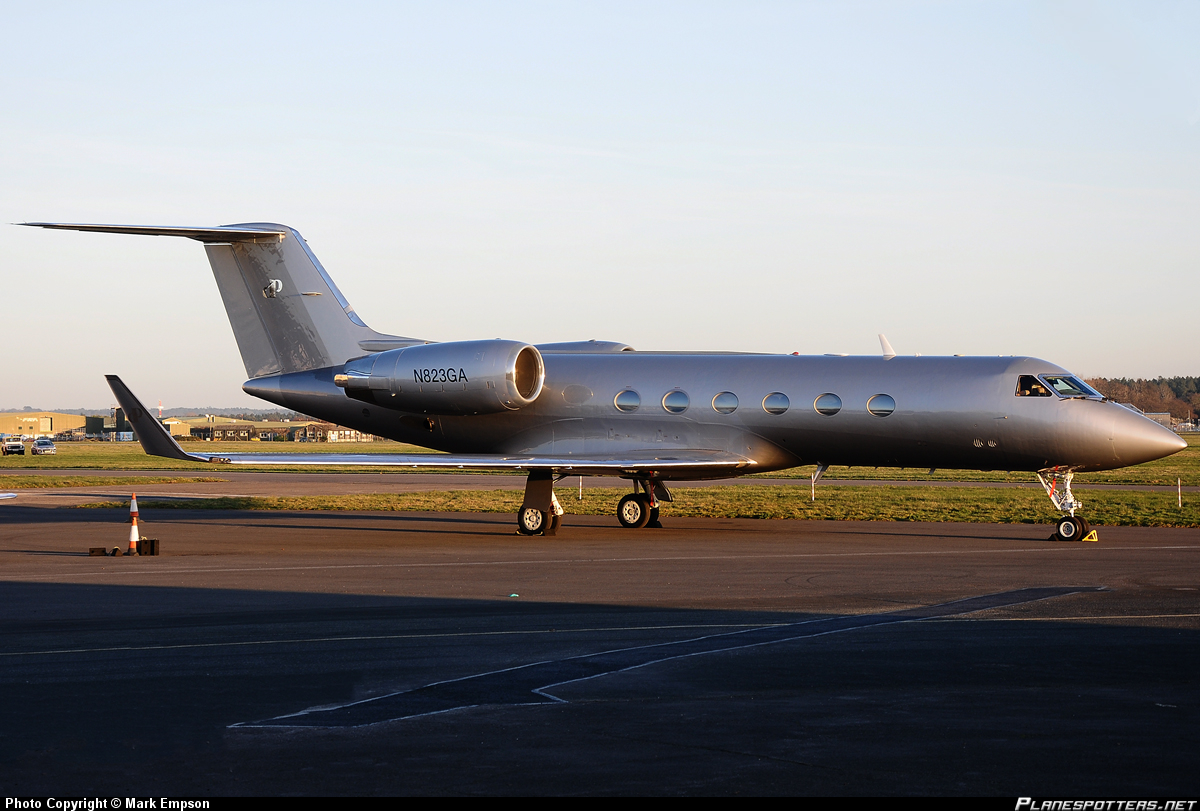

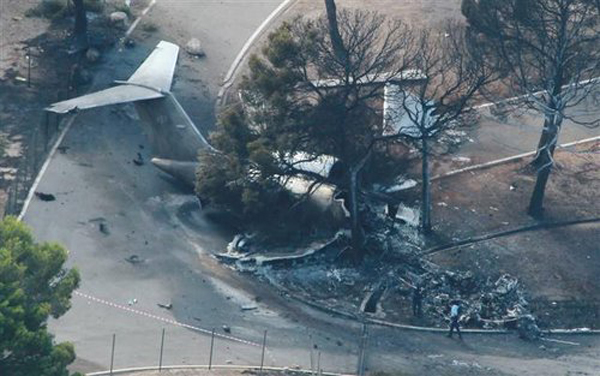
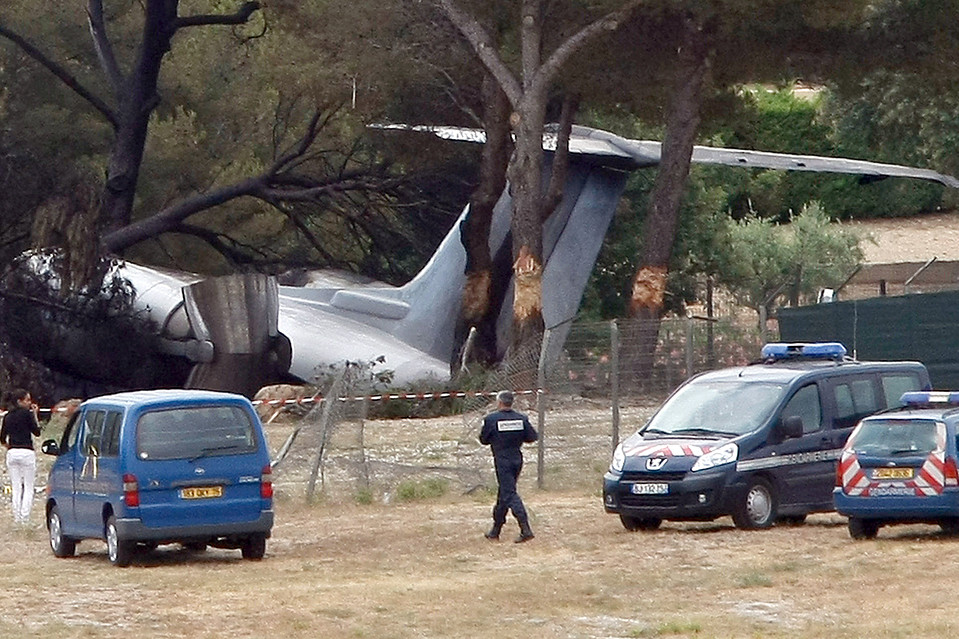
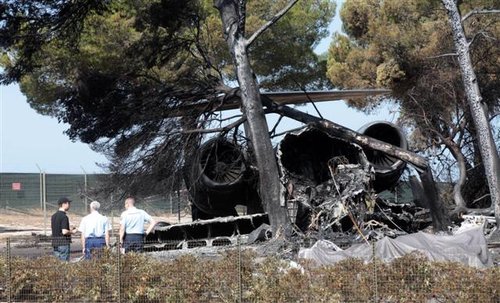
Crash of a Cessna 208B Grand Caravan in Lézignan-Corbières
Date & Time:
May 25, 2012 at 1710 LT
Registration:
D-FAAF
Survivors:
Yes
Schedule:
Lézignan-Corbières - Lézignan-Corbières
MSN:
208B-1125
YOM:
2005
Crew on board:
1
Crew fatalities:
Pax on board:
0
Pax fatalities:
Other fatalities:
Total fatalities:
0
Captain / Total hours on type:
850.00
Circumstances:
The single engine aircraft departed Lézignan-Corbières Airport at 1650LT with a pilot and several skydivers on board. At 10,500 feet, all skydivers jumped out and the pilot reduced his altitude to return to his base. On final approach to runway 08, at a height of 700 feet and at a speed of 90 knots, the pilot slightly increased the engine power to maintain the glide and then reduced again the power. At this time, the engine stopped and the propeller auto-feathered. Unable to reach the runway, the pilot attempted an emergency landing in a vineyard located some 800 meters short of runway 08, to the right of its extended centerline. While the pilot was uninjured, the aircraft was damaged beyond repair.
Probable cause:
Investigation were unable to determine the cause of the turbine failure on final approach. Sufficient fuel (about 500 pounds) was still present in the tanks and all analysis of the engine, fuel supply control system and the fuel pump did not reveal any anomalies.
Final Report:
